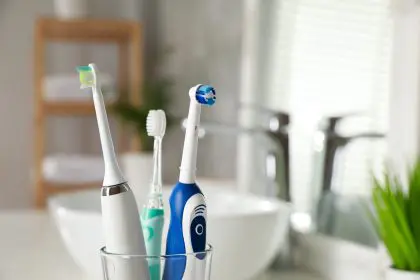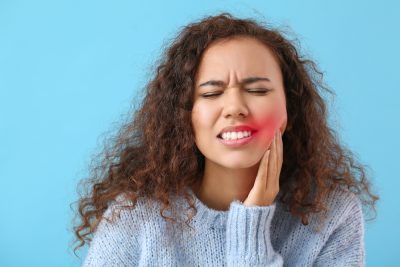Many people experience the frustrating reality of yellow teeth despite maintaining what they believe to be excellent oral hygiene. The daily ritual of brushing, flossing, and using mouthwash should theoretically keep teeth sparkling white, yet countless individuals find themselves disappointed when looking in the mirror. The truth behind persistent tooth discoloration extends far beyond simple brushing habits and involves complex factors that many people never consider.
1. Enamel naturally thins with age
The aging process affects every part of the human body, including teeth. As people grow older, the outer layer of tooth enamel gradually wears away through decades of chewing, grinding, and exposure to acids. This enamel serves as the white, protective coating that gives teeth their bright appearance. Underneath this enamel lies dentin, a naturally yellowish tissue that becomes more visible as the enamel thins.
This natural thinning process cannot be reversed through brushing alone. Even the most diligent oral hygiene routine cannot restore enamel once it has worn away. The yellowing that occurs due to enamel loss represents a structural change in the tooth rather than surface staining that can be scrubbed away with a toothbrush.
The rate at which enamel wears varies significantly between individuals. Genetic factors, dietary habits, and lifestyle choices all influence how quickly this process occurs. Some people may notice yellowing in their thirties, while others maintain whiter teeth well into their later years.
2. Genetics determine your natural tooth color
Many people assume that all teeth should naturally be bright white, but this expectation stems from unrealistic media portrayals and cosmetic dental procedures. Natural tooth color varies dramatically among individuals due to genetic factors that determine both enamel thickness and dentin color.
Some people inherit naturally thicker enamel that provides better coverage of the underlying dentin. Others may have genetically determined dentin that appears more yellow or gray. These inherited characteristics cannot be changed through brushing or conventional oral hygiene practices.
The genetic component of tooth color explains why family members often share similar tooth shades. Parents who have naturally darker teeth frequently pass these characteristics to their children, regardless of how well everyone maintains their oral hygiene.
3. Dietary habits create deep stains
Certain foods and beverages contain compounds called chromogens that easily attach to tooth enamel and create lasting stains. These pigmented molecules penetrate beneath the surface of teeth, where regular brushing cannot reach them. Coffee, tea, red wine, and dark-colored fruits represent some of the most problematic staining agents.
The temperature of beverages also affects their staining potential. Hot drinks cause tooth enamel to expand slightly, creating microscopic openings that allow staining compounds to penetrate more deeply. This explains why hot coffee or tea often creates more significant discoloration than cold alternatives.
Acidic foods and drinks compound the staining problem by temporarily softening tooth enamel. When enamel is in this softened state, it becomes more porous and susceptible to stain absorption. Citrus fruits, tomatoes, and carbonated beverages can create this temporary vulnerability that allows stains to set more permanently.
4. Medications cause internal discoloration
Numerous medications can cause tooth discoloration that develops from within the tooth structure itself. This internal staining cannot be addressed through external cleaning methods like brushing or professional cleanings. Antibiotics, particularly those in the tetracycline family, are notorious for causing permanent tooth discoloration when taken during tooth development.
Antihistamines, blood pressure medications, and antipsychotic drugs can also contribute to tooth discoloration through various mechanisms. Some medications reduce saliva production, which allows staining compounds to remain in contact with teeth for longer periods. Others may affect the mineral composition of developing teeth or cause chemical changes that alter tooth color.
The timing of medication use significantly impacts the extent of discoloration. Medications taken during childhood, when permanent teeth are still developing, often cause more dramatic and permanent color changes than those taken during adulthood.
5. Medical conditions affect tooth appearance
Several medical conditions can directly or indirectly cause tooth discoloration that persists despite excellent oral hygiene. Liver disease can cause teeth to develop a brownish or grayish tint due to changes in bilirubin levels. Certain genetic disorders affect enamel development, resulting in teeth that appear yellow, brown, or mottled from birth.
Eating disorders, particularly those involving frequent vomiting, expose teeth to stomach acid that erodes enamel and creates yellowing. The acid literally dissolves the white outer layer of teeth, revealing the darker dentin underneath. This type of damage accumulates over time and cannot be reversed through brushing.
Autoimmune conditions and their treatments can also affect oral health and tooth appearance. Some diseases cause dry mouth, which reduces the natural cleaning action of saliva and allows stains to accumulate more easily. Others may affect the body’s ability to maintain healthy tooth structure.
6. Fluorosis creates permanent discoloration
Excessive fluoride exposure during tooth development can cause a condition called fluorosis, which results in permanent tooth discoloration. This condition occurs when children consume too much fluoride through drinking water, toothpaste, or supplements while their permanent teeth are still forming beneath the gums.
Mild fluorosis appears as white spots or streaks on teeth, while more severe cases can cause brown or yellow discoloration. The affected areas represent changes in the enamel structure that cannot be corrected through regular brushing or professional cleanings.
The timing of fluoride exposure determines which teeth are affected. Since different teeth develop at different times, fluorosis may affect only certain teeth or may create varying degrees of discoloration across the mouth.
7. Improper brushing techniques cause damage
Many people unknowingly use brushing techniques that actually contribute to tooth discoloration rather than preventing it. Brushing too aggressively or using hard-bristled toothbrushes can gradually wear away tooth enamel, exposing the yellower dentin underneath. This mechanical wear creates the same yellowing effect as natural aging but occurs more rapidly.
Brushing immediately after consuming acidic foods or drinks can also cause damage. The acid temporarily softens tooth enamel, making it more vulnerable to abrasion from brushing. This combination of acid exposure and aggressive brushing can accelerate enamel loss and subsequent yellowing.
Using abrasive toothpastes or home whitening remedies can have similar effects. Baking soda, activated charcoal, and other popular DIY whitening ingredients may actually damage tooth enamel through their abrasive action, leading to increased yellowing over time.
Understanding the complexity of tooth color
The persistent yellowing of teeth despite regular brushing reflects the complex nature of tooth structure and the many factors that influence tooth appearance. Surface stains from food and beverages represent only one component of tooth discoloration, and these are often the easiest to address through improved oral hygiene.
The more challenging forms of discoloration involve structural changes to teeth, genetic factors, or internal staining that cannot be reached by external cleaning methods. Understanding these underlying causes helps explain why some people struggle with yellow teeth despite maintaining excellent oral hygiene habits.
Professional dental evaluation can help identify the specific causes of tooth discoloration in individual cases. This assessment can guide appropriate treatment decisions and help people develop realistic expectations about what can be achieved through various whitening methods. Some forms of discoloration respond well to professional treatments, while others may require more extensive cosmetic procedures to address effectively.
The key to managing tooth discoloration lies in understanding its root causes rather than simply intensifying brushing efforts. By identifying the specific factors contributing to yellowing, people can make informed decisions about the most appropriate treatments and develop strategies to prevent further discoloration.












